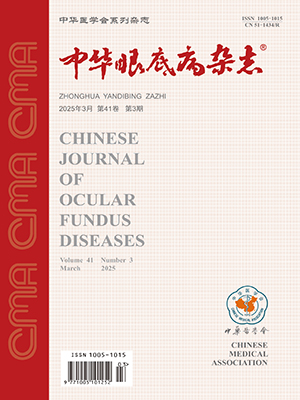Objective To analyze the reasons, methods of treatment, and effects on prognosis of vitreous hemorrhage after vitrectomy in patients with diabetic retinopathy. Methods The clinical data of 98 patients (122 eyes) with diabetic retinopathy (VI stage) who had undergone vitrectomy were retrospectively analyzed. Results Post-vitrectomy vitreous hemorrhage ( gt;grade 2) was found in 25 eyes with the occurrence of 20.5%, in which the hemorrhage occurred 1 week after the surgery in 8 eyes, 1 week to 1 month in 6 eyes, and more than 1 month in 11 eyes. In the 25 eyes, C3F8 tamponade eyes occupied 31.1%, silicone oil tamponade eyes occupied 6.1%, air tamponade eyes occupied 33.3%, and infusion solution tamponade eyes occupied 26.3%. Peripheral fibrovascular proliferation was found in 9 eyes. In the 3 eyes with silicone oil tamponade, the hemorrhage was absorbed in 2, and epiretinal membrane was found in 1 which was moved when the silicon oil was taken out. In the 22 eyes without silicone oil tamponade, the hemorrhage was absorbed in 6 and aggravated in 2 without any timely treatment, neovascular glaucoma occurred in 1, and wide vitreo-retinal proliferation and retinal detachment was observed in 1 with the visual acuity of no light perception. Operations such as fluid-air exchange, vitrectomy were performed on 14 eyes 2 weeks after the hemorrhage absorption stopped. Recurrent vitreous hemorrhage was not found in 12 eyes after single operation. At the end of the follow up period, the visual acuity was no light perception in 3 eyes, hand moving in 2 eyes, counting finger-0.1 in 10 eyes, under 0.3 in 4 eyes, and over 0.3 in 6 eyes. Conclusion Most of the patients with vitreous hemorrhage after vitrectomy due to DR had peripheral fibrovascular proliferation. The visual prognosis after re-operation is good. (Chin J Ocul Fundus Dis,2007,23:241-243)
Citation: DAI Rongping,DONG Fangtian,HUO Dongmei,et al.. Clinical analysis of vitreous hemorrhage after vitrectomy in diabetic retinopathy. Chinese Journal of Ocular Fundus Diseases, 2007, 23(4): 241-243. doi: Copy
Copyright © the editorial department of Chinese Journal of Ocular Fundus Diseases of West China Medical Publisher. All rights reserved




